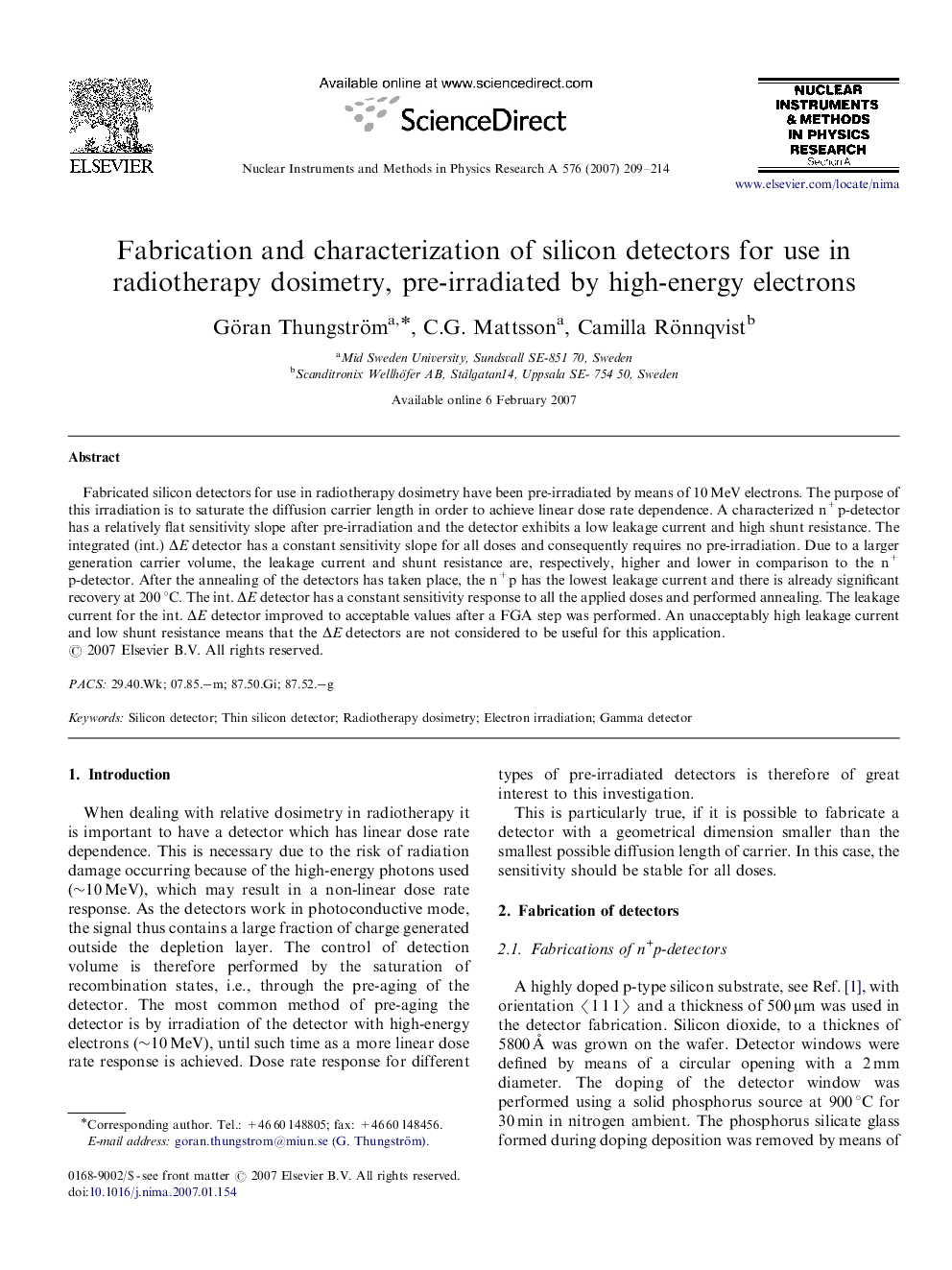| Article ID | Journal | Published Year | Pages | File Type |
|---|---|---|---|---|
| 1830865 | Nuclear Instruments and Methods in Physics Research Section A: Accelerators, Spectrometers, Detectors and Associated Equipment | 2007 | 6 Pages |
Fabricated silicon detectors for use in radiotherapy dosimetry have been pre-irradiated by means of 10 MeV electrons. The purpose of this irradiation is to saturate the diffusion carrier length in order to achieve linear dose rate dependence. A characterized n+p-detector has a relatively flat sensitivity slope after pre-irradiation and the detector exhibits a low leakage current and high shunt resistance. The integrated (int.) ΔE detector has a constant sensitivity slope for all doses and consequently requires no pre-irradiation. Due to a larger generation carrier volume, the leakage current and shunt resistance are, respectively, higher and lower in comparison to the n+p-detector. After the annealing of the detectors has taken place, the n+p has the lowest leakage current and there is already significant recovery at 200 °C. The int. ΔE detector has a constant sensitivity response to all the applied doses and performed annealing. The leakage current for the int. ΔE detector improved to acceptable values after a FGA step was performed. An unacceptably high leakage current and low shunt resistance means that the ΔE detectors are not considered to be useful for this application.
